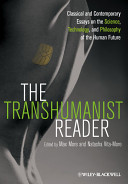Protocells
In 2007 two researchers, chemist Martin Hanczyc and artificial life scientist Takashi Ikegami, who were collaborating across disciplines agreed to test a hypothesis about the earliest forms of life (Hanczyc et al. 2007). They hypothesized that life’s precursors would need to move around their environment to take advantage of a resource-rich situation on early Earth. Hanczyc made a model system to test this hypothesis using an oil droplet that he bestowed with an internal chemical reaction, or “metabolism,” that propelled it through water. All living systems have a “metabolism,” which is a specific set of chemical reactions that allow living systems to remain in constant conversation with the natural world. These reactions involve the chemical conversion of one group of substances into another, either through the production or the absorption of energy, and this enables living systems to make the most of their local resources in an adaptable, sustainable way. Designing a chemical system that could move around was a significant scientific breakthrough, but Hanczyc’s “proto-cell” did more than this: it also behaved in a life-like way, being able to sense its environment (Toyota et al. 2009) and show complex “behaviors,” and is the first experimental system that has so clearly possessed life-like qualities without needing instructions from DNA. This protocell represented an entirely new kind of technology that operates in a way that is completely different to machines that can distribute matter in time and space.
Protocells are self-assembling agents that are based on the chemistry of oil and water. They assemble themselves from a spontaneous field of self-organizing energy and can exist as oil droplets in a water medium or water-based droplets in an oil medium as a range of different kinds of “species” being composed from different recipes. Where oil/water interfaces occur there is a spontaneous self-assembly of molecules owing to the chemical basis for energy exchange at the droplet interface. The consequences of mass interactions are observed in the system as emergent phenomena that typically exhibit life-like behavior such as movement. Even when the initial conditions are the same the various protocell species show a range of possible types in any given environment because of the emergence in the system, and these can be characterized.
Protocells are not thought to be alive since they do not possess DNA, so although they possess a metabolism and a container they do not pass any specific information to their “offspring.” Protocells do not replicate through any recognizable deliberate strategy but occasionally fuse and divide by “random” means without the need for DNA. This adds more intrigue to their indeterminate identity between living and non-living states. Ultimately protocells cannot self-replicate autonomously and depend on the participation of humans for their effective propagation. The spontaneously occurring processes of increasing population density observed in the laboratory are slow and simply too inefficient to be used as an effective method of replication.
Notes:
From Rachel Armstrong's "Alternative Biologies"
Folksonomies: biology origin of life
Taxonomies:
/technology and computing (0.438803)
/business and industrial/energy/oil (0.418593)
/health and fitness/disease (0.307840)
Keywords:
scientist Takashi Ikegami (0.998163 (neutral:0.000000)), chemist Martin Hanczyc (0.980959 (neutral:0.000000)), internal chemical reaction (0.948938 (neutral:0.000000)), significant scientific breakthrough (0.928604 (positive:0.359916)), spontaneously occurring processes (0.917805 (negative:-0.651374)), entirely new kind (0.915756 (positive:0.796920)), recognizable deliberate strategy (0.911654 (neutral:0.000000)), various protocell species (0.899158 (negative:-0.266951)), life-like way (0.830028 (positive:0.487069)), life-like qualities (0.827133 (neutral:0.000000)), oil droplet (0.824927 (neutral:0.000000)), life-like behavior (0.814860 (neutral:0.000000)), resource-rich situation (0.806772 (positive:0.369645)), oil droplets (0.806198 (neutral:0.000000)), Alternative Biologies (0.803797 (positive:0.267570)), earliest forms (0.800968 (neutral:0.000000)), droplet interface (0.799846 (neutral:0.000000)), Rachel Armstrong (0.796970 (positive:0.388892)), chemical reactions (0.793543 (positive:0.649675)), spontaneous self-assembly (0.792804 (neutral:0.000000)), chemical conversion (0.790852 (negative:-0.296994)), early Earth (0.789074 (positive:0.369645)), spontaneous field (0.785516 (neutral:0.000000)), self-assembling agents (0.784727 (neutral:0.000000)), natural world (0.784557 (positive:0.649675)), local resources (0.782096 (positive:0.537477)), sustainable way (0.781343 (positive:0.698762)), constant conversation (0.780822 (positive:0.649675)), self-organizing energy (0.778383 (neutral:0.000000)), indeterminate identity (0.773498 (negative:-0.689486))
Entities:
Martin Hanczyc:Person (0.879116 (neutral:0.000000)), chemical reactions:FieldTerminology (0.780412 (positive:0.176341)), Protocells:Person (0.682781 (negative:-0.047779)), Takashi Ikegami:Person (0.524670 (neutral:0.000000)), Rachel Armstrong:Person (0.496718 (positive:0.388892)), scientist:JobTitle (0.463682 (neutral:0.000000)), Toyota:Company (0.458969 (neutral:0.000000))
Concepts:
Chemical reaction (0.976876): dbpedia | freebase | opencyc
Life (0.905908): dbpedia | freebase
Energy (0.804078): dbpedia | freebase
Emergence (0.770446): dbpedia | freebase
Chemistry (0.762249): dbpedia | freebase | opencyc
Self-organization (0.740753): dbpedia | freebase
Scientific method (0.700766): dbpedia | freebase
Chemical substance (0.638053): dbpedia | freebase | opencyc





